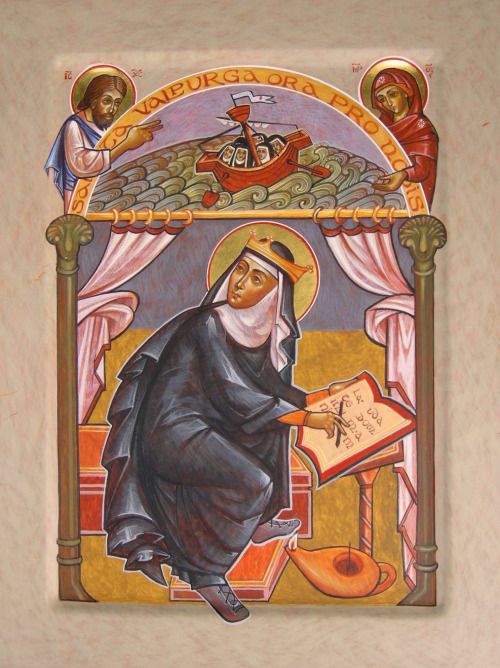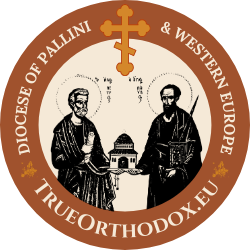St. Walpurga or Walburga – Feast Day February 25- the Day of Her Falling Asleep in the Lord

St.Walpurga was born in the county of Devon, England, into a local aristocratic family. She was the daughter of Saint Richard the Pilgrim, an underking of the West Saxons, and of Saint Wuna of Wessex, and had two brothers, Saint Willibald and Saint Winibald
In 721 Richard set out on a pilgrimage to Rome with his two sons. Before leaving he entrusted Walburga, then 11 years old, to the abbess of the double monastery at Wimborne Abbey in Dorset. She had been there but a year, when she received word that her father had died at Lucca. After seeing to their father’s burial in the Basilica of San Frediano, her brothers completed the pilgrimage to Rome, where they both became seriously ill. (Hygeburg, who wrote the Vita S. Willibaldi, says they contracted the Black Death; Francis Mershman suggests malaria).[4]
After recovering, Winibald, who was not of a particularly strong constitution, remained at Rome to pursue further studies, while Willibald set out for the Holy Land. After about seven years of traveling, Willibald returned to Italy and became a monk at Monte Cassino. In 730, Winibald returned to England and engaged a third brother and several amongst his kindred and acquaintance to accompany him in his journey back to Rome to begin a monastic life there.[5]
During this time Walpurga remained at Wimborne where she was educated, and in the course of time became a nun. The nuns of Wimborne were skilled at copying and ornamenting manuscripts; and celebrated for Opus Anglicanum, a fine needlework utilizing gold and silver threads on rich velvet or linen, often decorated with jewels and pearls. Such English embroidery was in great demand across Europe. She spent 26 years as a member of the community.
In 737, Walpurga’s uncle (her mother’s brother), Saint Boniface, was in Rome and recruited his nephews to assist him in his religious work in Germany. Winnebald arrived in Thuringia on 30 November, 740, and after being ordained a priest, was placed in charge of seven churches. Willibald, upon arriving at Eichstätt, was ordained by Boniface on 22 July, 741 and began missionary work in the area.
Walpurga then traveled with her brothers, Willibald and Winibald, to Francia (now Württemberg and Franconia) to assist Saint Boniface in evangelizing the still-pagan Germans. Because of her rigorous training, she was able to write her brother Winibald’s vita and an account in Latin of his travels in Palestine. As a result, she is often called the first female author of both England and Germany.[7]
Walpurga became a nun in the double monastery of Heidenheim am Hahnenkamm, which was founded by Willibald. He appointed her as his successor and following his death in 751, Walpurga became the abbess of the monastery. Upon Winibald’s death in 760 she also succeeded him as superintendent of the Heidenheim monastery.
Walpurga fell asleep in the Lord on 25 February 777 or 779 (the records are unclear) and was buried at Heidenheim; the day carries her name in the Catholic church calendar. In 870, Walpurga’s remains were transferred to Eichstätt.

